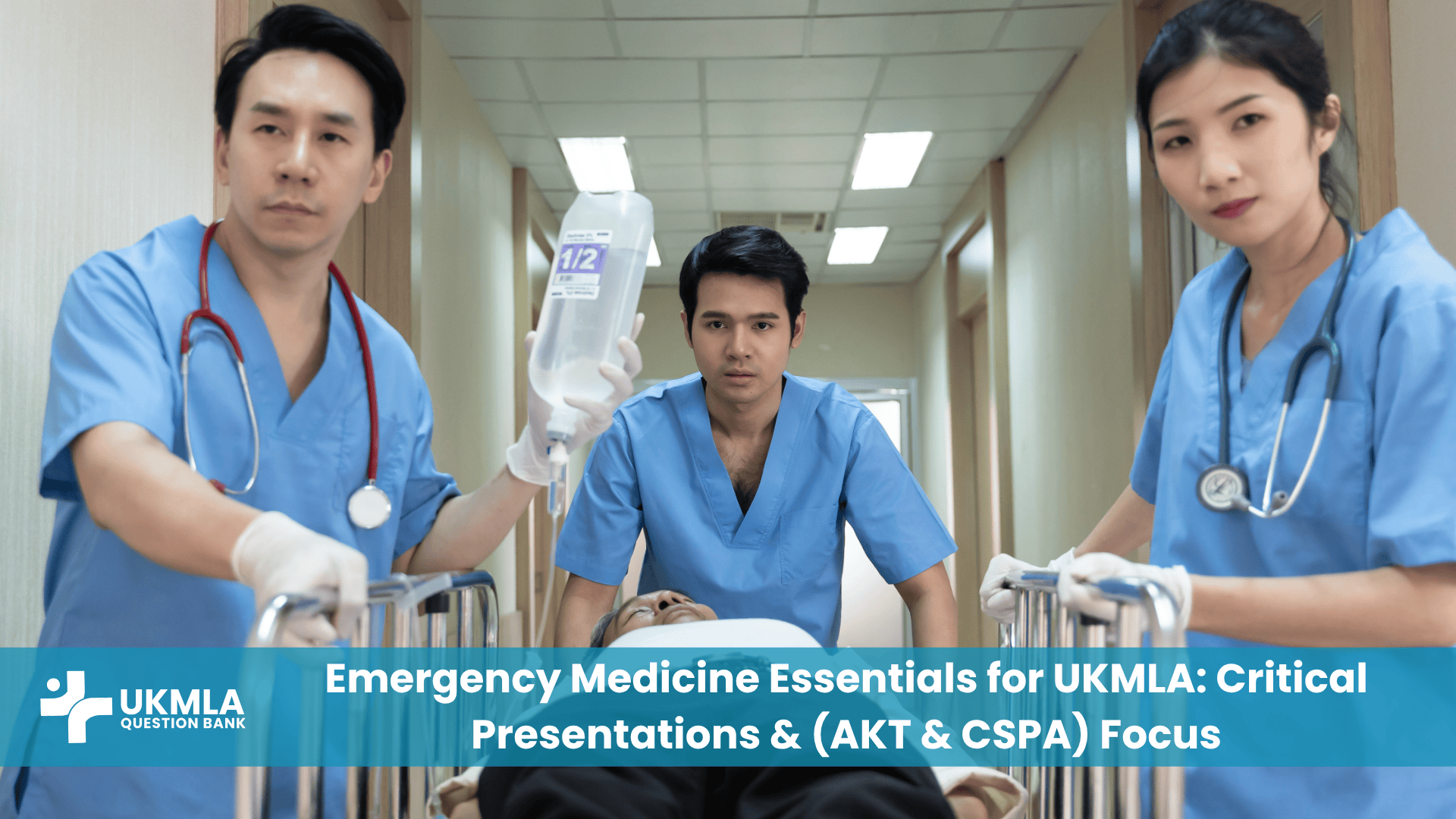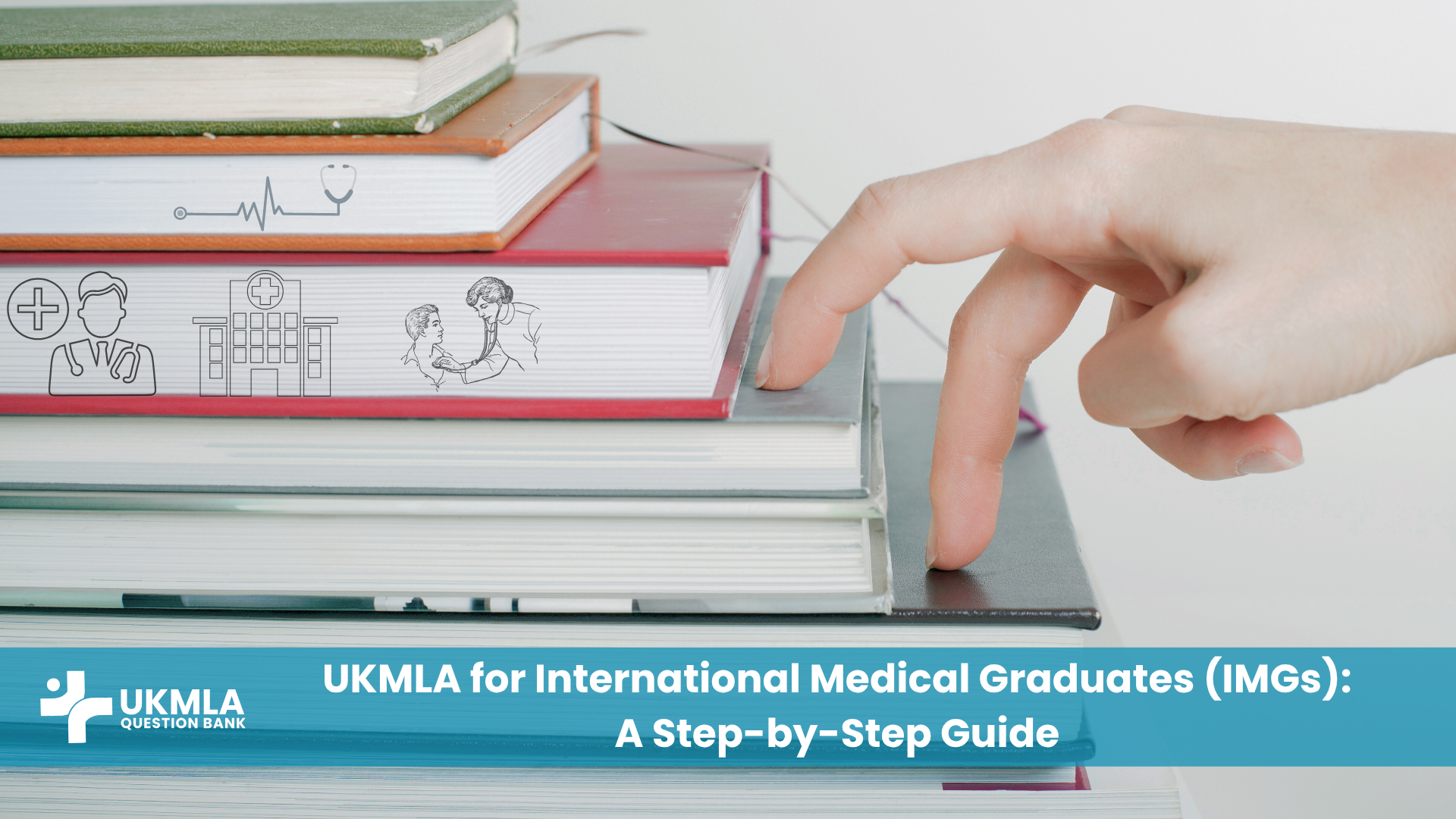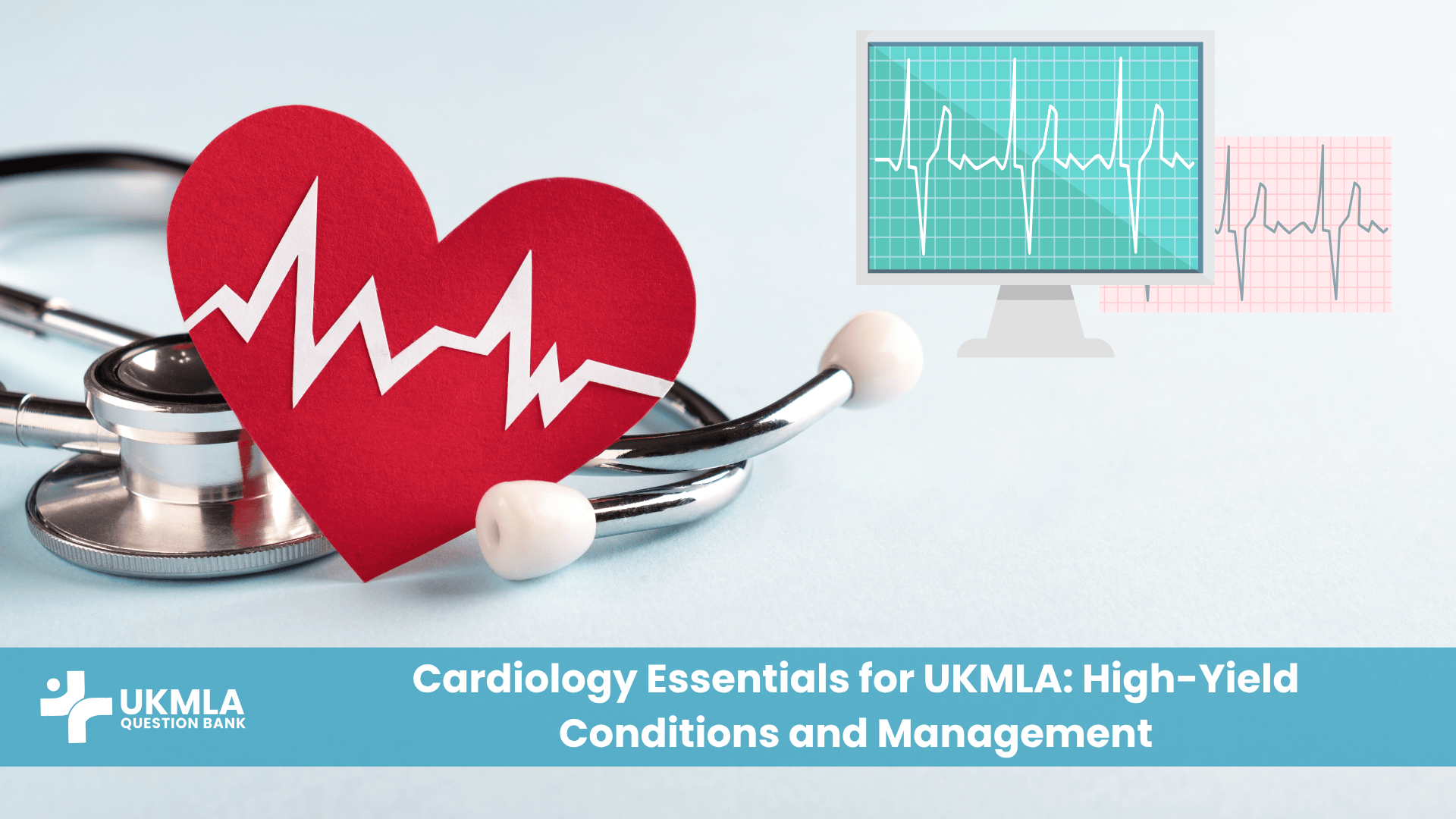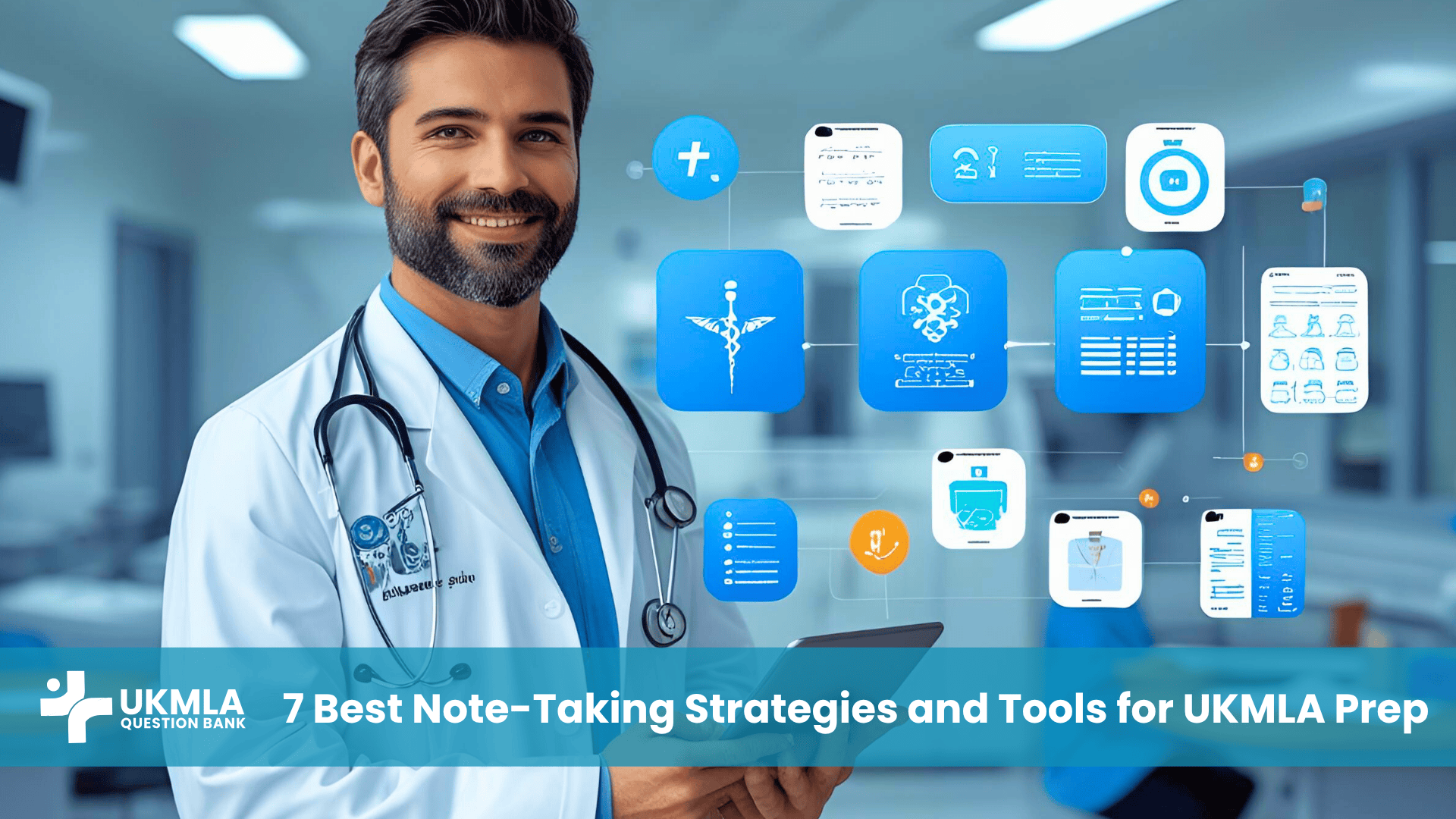Emergency medicine is not just a specialty; it is the crucible where a junior doctor’s knowledge, skills, and composure are most intensely tested. For the UKMLA, proficiency in UKMLA emergency medicine is a non-negotiable requirement, heavily weighted across both the Applied Knowledge Test (AKT) and the Clinical and Professional Skills Assessment (CPSA). Your ability to systematically assess and manage an acutely unwell patient is the ultimate demonstration of your readiness for safe UK practice.
This comprehensive guide is designed to focus your revision on the absolute essentials of UKMLA emergency medicine. We will dissect the core principles of managing emergencies, from the universal ABCDE approach to the specific protocols for critical presentations like anaphylaxis, sepsis, and diabetic ketoacidosis. Crucially, we will highlight how these topics are assessed in both the AKT and CPSA, helping you build a versatile skill set that translates from theoretical questions to hands-on performance. Mastering these concepts will be fundamental to your success.
Key Takeaways
Before we dive into the protocols, here are the core principles for mastering UKMLA emergency medicine:
- ABCDE is Everything: The ABCDE (Airway, Breathing, Circulation, Disability, Exposure) approach is the universal language of emergency care. Know it, practice it, and apply it to every unwell patient.
- Master Critical Algorithms: Commit the management algorithms for life-threatening conditions like anaphylaxis, sepsis, and hypoglycaemia to memory.
- Know Your Numbers: Be familiar with key diagnostic criteria, such as the qSOFA or NEWS2 score for sepsis and the diagnostic triad for DKA.
- CPSA Focus is on Action: In the CPSA, examiners are looking for safe, systematic action. This includes calling for help early and initiating time-critical interventions.
- AKT Focus is on “Why”: The AKT will test your understanding of the pathophysiology, the rationale for treatment choices, and the potential complications of emergency conditions.
- Practice Time-Critical Scenarios: Use timed practice for both question banks (AKT) and simulated scenarios (CPSA) to get used to thinking and acting under pressure.
- Safety First: The primary goal in any UKMLA emergency medicine scenario is to recognize the sick patient and apply a structured approach to prevent harm.
Why Emergency Medicine is Core to the UKMLA
The UKMLA’s primary purpose is to ensure you are a safe doctor. No area of medicine tests this more directly than emergencies. Your competence in UKMLA emergency medicine is therefore a key measure of your overall capability.
The Dual Focus of the AKT and CPSA
The UKMLA cleverly assesses your emergency skills across its two components:
- The AKT tests your knowledge of emergencies. It will present a vignette of an unwell patient and ask you “What is the most likely diagnosis?” or “What is the mechanism of action of the most appropriate immediate treatment?”. This is where you prove you know what to do and why.
- The CPSA tests your actions. In a simulated environment, you will be faced with an acutely unwell (simulated) patient. The examiners will assess your ability to perform the ABCDE assessment, communicate effectively under pressure, and physically initiate life-saving interventions. This is where you prove you can do it.
To succeed, your understanding of UKMLA emergency medicine must be both deep (for the AKT) and practical (for the CPSA).
“Readiness for Safe Practice” in Action
The GMC’s core theme of “Readiness for Safe Practice” is embodied by emergency medicine. It’s about recognizing a sick patient, escalating appropriately, and starting simple but effective treatments. It’s not about knowing obscure details, but about doing the basics well, every time. A candidate who can calmly perform an ABCDE assessment demonstrates this readiness far more effectively than one who can recite a rare syndrome. For an essential overview of this concept, read our guide, “A Deep Dive into the ‘Readiness for Safe Practice’ Domain of UKMLA“.
High-Stakes, High-Yield Scenarios
The principles of UKMLA emergency medicine are high-yield because they are universally applicable. The ABCDE approach can be used for a patient with a massive haemorrhage, a severe asthma attack, or a septic shock. By mastering these core frameworks, you equip yourself to handle a huge range of potential exam scenarios, making your revision highly efficient.
The ABCDE Approach: The Foundation of All Emergency Management
If you learn only one thing for UKMLA emergency medicine, it should be the ABCDE approach. It is your safety net, your structure, and your guide in any acute situation.
“In the chaos of an emergency, the ABCDE approach is the calm voice of reason. It provides a systematic framework that ensures life-threatening problems are identified and treated in order of priority. It is the single most important skill a junior doctor possesses.” – (Attributed to an A&E Consultant).
| Step | What it Stands For | Key Assessment Points | Immediate Life-Saving Interventions |
|---|---|---|---|
| A | Airway | Look, listen, and feel for airway patency. Is the patient able to speak? Are there added sounds like stridor or gurgling? | Head-tilt chin-lift, suction, simple airway adjuncts (oropharyngeal/nasopharyngeal). |
| B | Breathing | Check respiratory rate, oxygen saturations, chest expansion, percussion note, and auscultate the lungs. | Apply high-flow oxygen, assist ventilation with a bag-valve-mask, treat tension pneumothorax. |
| C | Circulation | Assess heart rate, blood pressure, capillary refill time, and temperature. Look for signs of shock. | Gain IV access, take bloods, give a fluid bolus, stop any active bleeding. |
| D | Disability | Check conscious level using AVPU or GCS. Check blood glucose (BM). Check pupil size and reactivity. | Correct hypoglycaemia with glucose. Manage seizures. Consider causes of reduced consciousness. |
| E | Exposure | Expose the patient to check for rashes, injuries, sources of infection, etc., while maintaining dignity and preventing heat loss. | Look for hidden bleeding, check temperature, and treat hypothermia. |
High-Yield Medical Emergencies for the UKMLA
While the ABCDE approach is universal, you need to know the specific management for common, life-threatening conditions. These are core UKMLA emergency medicine topics.
Anaphylaxis
Anaphylaxis is a severe, life-threatening, systemic hypersensitivity reaction.
- Recognition: The key is a rapid onset of illness with airway and/or breathing and/or circulation problems, often associated with skin changes. Look for stridor, wheeze, respiratory distress, and hypotension (shock).
- Immediate Management: This is a classic algorithm. The single most important first step is IM Adrenaline. The full management follows the ABCDE approach. Authoritative guidance is provided by the Resuscitation Council UK.
Sepsis and Septic Shock
Sepsis is a life-threatening organ dysfunction caused by a dysregulated host response to infection.
- Recognition: Use scoring systems like NEWS2 or qSOFA to identify at-risk patients. Look for signs of infection combined with signs of organ dysfunction (e.g., hypotension, tachycardia, confusion, raised lactate).
- The Sepsis Six: This is a bundle of interventions that must be delivered within one hour of recognition. Highlight: Knowing the Sepsis Six bundle is a critical piece of knowledge for UKMLA emergency medicine.
- Give high-flow Oxygen
- Take Blood Cultures
- Give IV Antibiotics
- Give IV Fluid Resuscitation
- Measure Lactate
- Measure Urine Output
Diabetic Emergencies: DKA and HHS
You must be able to differentiate Diabetic Ketoacidosis (DKA) and Hyperosmolar Hyperglycaemic State (HHS).
| Feature | Diabetic Ketoacidosis (DKA) | Hyperosmolar Hyperglycaemic State (HHS) |
|---|---|---|
| Typical Patient | Type 1 Diabetes | Type 2 Diabetes (often elderly) |
| Key Pathophysiology | Insulin deficiency leads to ketoacidosis. | Profound dehydration and hyperglycaemia without significant ketones. |
| Blood Glucose | High (>11 mmol/L) | Very high (>30 mmol/L) |
| Ketones | High (in blood or urine) | Low or absent |
| Acidosis | Severe metabolic acidosis (low pH, low bicarbonate) | Mild or no acidosis |
“In a diabetic emergency, the initial treatment is always intravenous fluids. Correcting dehydration is the first and most critical step before carefully starting insulin.” – (Attributed to an Endocrinology Consultant).
Preparing for Emergencies in the AKT vs. the CPSA
Your preparation for UKMLA emergency medicine must be tailored to the specific demands of each exam component.
| Emergency | AKT Focus (Knowledge) | CPSA Focus (Action & Communication) |
|---|---|---|
| Anaphylaxis | Knowing the dose of IM adrenaline (e.g., 500mcg for an adult) and the mechanism of action of adrenaline (alpha and beta agonist). | Calmly recognizing the situation, calling for help, correctly drawing up and administering IM adrenaline to a manikin, and applying high-flow oxygen. |
| Sepsis | Understanding the pathophysiology of septic shock and the rationale for each element of the Sepsis Six bundle. | Recognizing a deteriorating patient, verbalizing the need to start the Sepsis Six pathway, prescribing fluids and antibiotics, and communicating clearly with a concerned nurse (actor). |
| Hypoglycaemia | Knowing the causes of hypoglycaemia and the difference in management between a conscious and an unconscious patient (oral glucose vs. IV glucose/IM glucagon). | Recognizing a low BM reading on the monitor, immediately asking for a sugary drink or administering IV glucose, and then providing a long-acting carbohydrate. |
Supercharge Your UKMLA Prep with UKMLAQuestionBank.com
A deep understanding of UKMLA emergency medicine is best forged through practice. UKMLAQuestionBank.com provides the ideal platform to test your knowledge and prepare for both the AKT and CPSA.
Our extensive UKMLA question bank is filled with high-yield SBAs based on emergency presentations. These questions are designed to test your diagnostic reasoning, your knowledge of management algorithms, and your understanding of the underlying science. For every question, our detailed explanations reinforce the key learning points, preparing you for the intellectual demands of the AKT. By mastering these scenarios in a practice environment, you build the mental framework needed to act decisively in the practical CPSA stations.
With UKMLAQuestionBank.com, you get:
- Realistic Emergency Scenarios: Practice with hundreds of vignettes covering everything from anaphylaxis to the acute abdomen.
- Focus on Critical Management Steps: Our questions are designed to test the most important, time-critical interventions.
- Performance Analytics: Identify your weaker areas in emergency medicine and focus your revision effectively.
- Confidence Under Pressure: Regular practice with our question bank helps you think clearly and systematically, even when the scenario is an emergency.
Frequently Asked Questions (FAQ) on Your UKMLA Emergency Medicine Questions Answered
While an ALS certificate is highly valuable, the UKMLA assesses you at the level of a competent FY1 doctor. You are expected to know Basic Life Support (BLS) perfectly and the principles of the ALS algorithm (e.g., the drugs used in cardiac arrest), but you will not be expected to lead a full cardiac arrest call in a CPSA station.
Attend clinical skills sessions at your medical school, practice on manikins, and take every opportunity to perform supervised procedures on the wards. You can also practice the ‘actions’ (like drawing up drugs) at home to build muscle memory.
Calling for help. Examiners want to see that you recognize a sick patient and know that you are part of a team. Saying “I would ask my senior to attend immediately” is a critical safety step.
No. Each CPSA station will focus on a single patient or scenario. The challenge is managing the one situation systematically, not multitasking between different emergencies.
You must know the doses for critical, life-saving drugs like IM adrenaline for anaphylaxis, IV glucose for hypoglycaemia, and the initial bolus of IV fluids. For others, knowing the drug class and indication is often sufficient.
It doesn’t matter. The key is to apply the ABCDE approach. You can safely manage a patient without a definitive diagnosis by treating the life-threatening problems you find. The diagnosis can come later.
The goal is to be slick and safe. This comes from practicing your ABCDE assessment so many times that it becomes automatic. It allows you to be efficient without rushing or cutting corners. Speed will follow from a well-rehearsed, systematic approach.
Yes, you could be asked about topics like consent in an emergency or the legal framework for treating an unconscious patient. Knowledge of the Mental Capacity Act is a key part of UKMLA emergency medicine.
Simulation is the best tool. The more you practice in mock OSCEs, the more accustomed you will become to the adrenaline and pressure, allowing you to stay focused on your system.
Use a two-pronged approach. Use a high-quality question bank like the one from our “UKMLA Question Bank: An Essential Resource for Medical Aspirants” for the AKT knowledge. For the CPSA, actively practice the ABCDE approach and key algorithms with peers until they are flawless.
Conclusion: Becoming a Confident First Responder
Mastering UKMLA emergency medicine is the pinnacle of your preparation. It represents the successful integration of your knowledge, skills, and professionalism. By building a strong foundation on the universal ABCDE approach and committing the key management algorithms to memory, you equip yourself with the tools to handle any acute situation, both in the exam and on the wards.
Approach your revision with a dual focus on the ‘why’ for the AKT and the ‘how’ for the CPSA. This comprehensive preparation will ensure you can not only answer the questions correctly but can also act decisively and safely when it matters most. Your confidence in managing emergencies is the ultimate proof of your readiness to be a UK doctor.
Ready to test your knowledge and build your confidence in UKMLA emergency medicine? Our comprehensive question bank is filled with exam-style scenarios to sharpen your skills. Explore the resources at UKMLAQuestionBank.com and take the next step in your preparation journey!
Excel in Your UKMLA Emergencies!
From anaphylaxis to the acute abdomen, ensure you are ready for any emergency. Access high-yield notes, practice questions, and proven strategies to master the most critical part of the UKMLA.
[Explore Our UKMLA Emergency Medicine Resources Now!]



